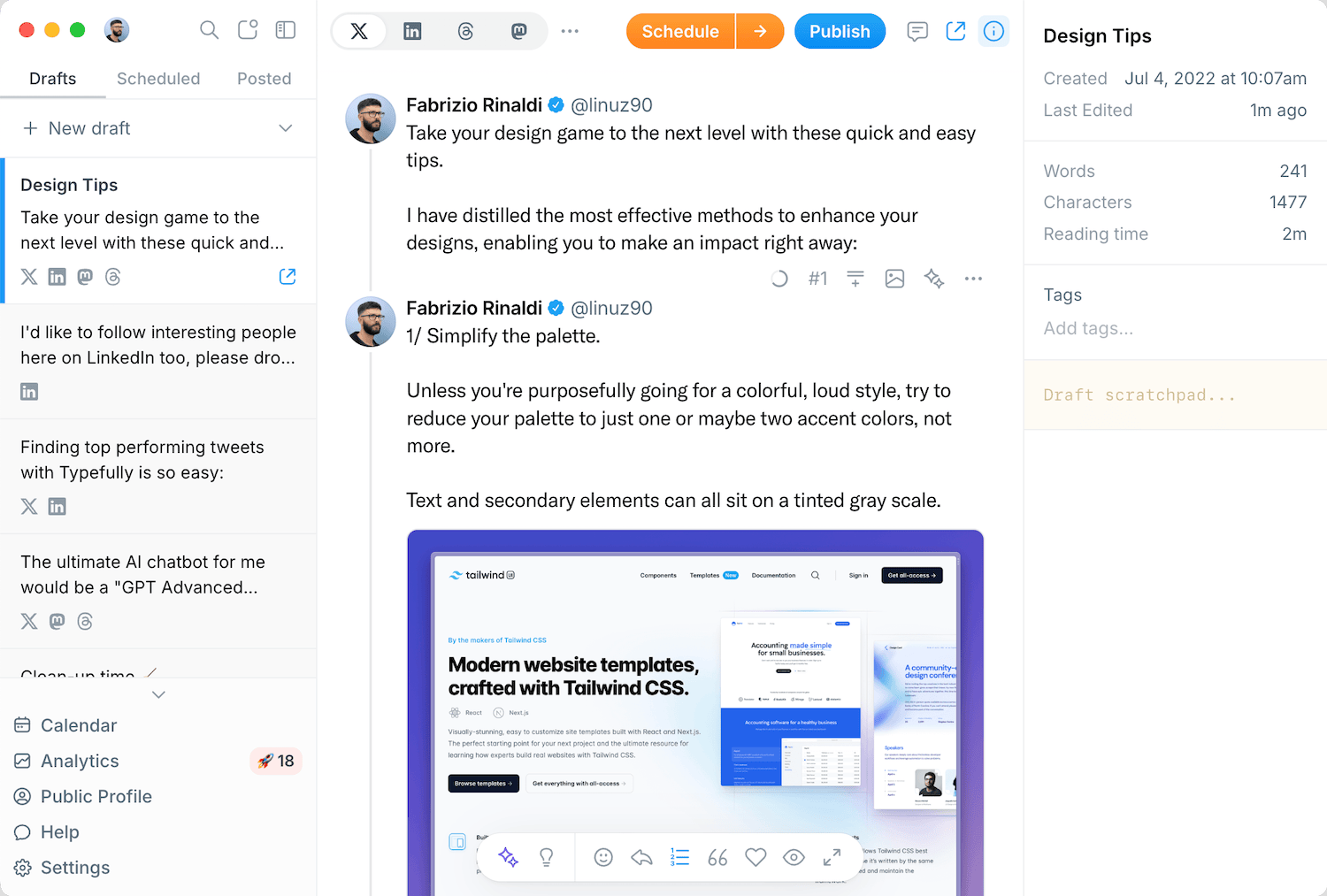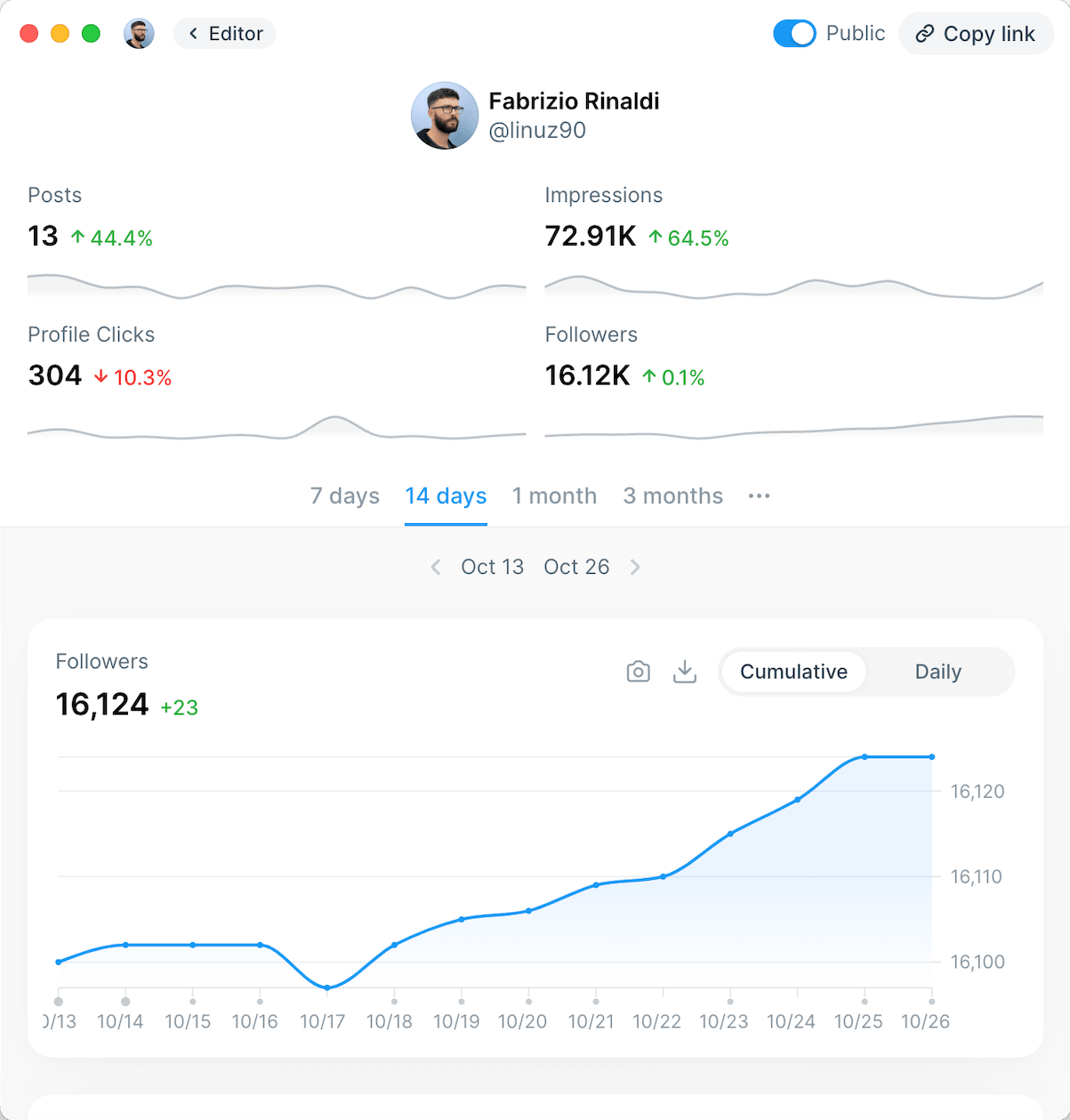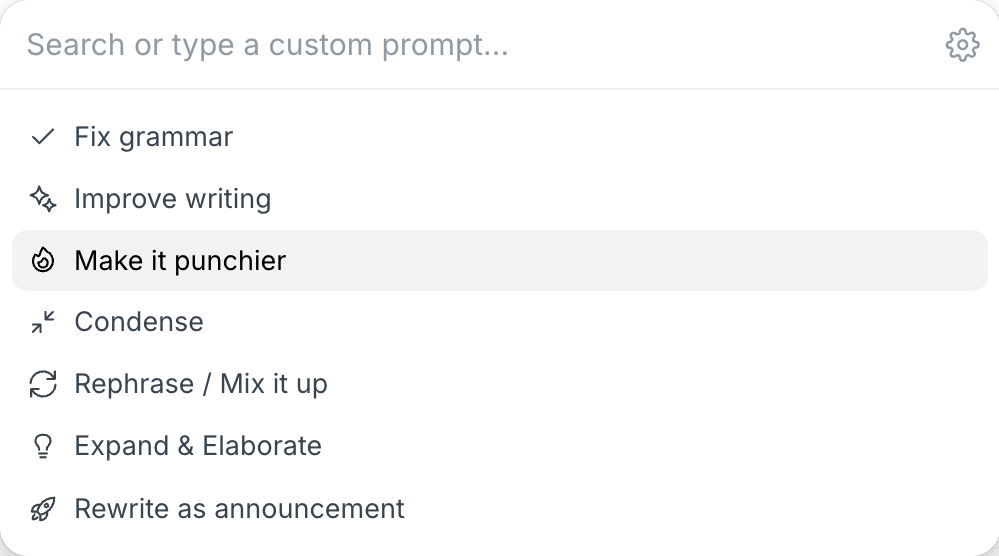Table of Contents
- What is Twitter Competitive Analysis?
- Why Analyze your Twitter Competitors?
- 1). Better understand your customers
- 2). Know what your competitor is doing right
- 3). Know what your competitor is doing wrong
- 4). Learn what’s missing in your industry
- 5). Have a benchmark against which you can measure your growth
- How to conduct a Twitter Competitor Analysis
- 1) Identify your competitors
- 2) List top competitors
- 3) Find topics and keywords used by your competitors
- 4) Create Twitter competitive analysis goals
- 5) Gauge key metrics
- How to Use Typefully for Twitter Competitive Analysis
- Mastering Twitter Competitive Analysis With Typefully
Looking to grow your presence on Twitter? Today, more professionals are using Twitter as a way to expand their brand and learn more about their industry, and one of the best ways to gain your edge is to learn from your competitors.
Here, we will explain why analyzing your Twitter competitors is so important and how you can get it done. Once you have your competitive analysis ready, Typefully can help you easily schedule, optimize and analyze your tweets to help build your brand on the platform.
What is Twitter Competitive Analysis?
Twitter competitive analysis helps you understand how similar accounts on Twitter grow their following based on a number of key factors. These include:
The way they get new followers
- Twitter content formats (e.g., the topics, the questions, videos, photos, etc.)
- Posting schedule
- Single tweets vs. threads
- The way they engage with other accounts
An effective Twitter competitive analysis needs to be data-driven. This means that you must understand and clearly define the variables, such as those presented above, that you are analyzing to effectively derive insights from them.
Why Analyze your Twitter Competitors?
Let’s take a deeper look at why you should analyze your Twitter competitors.
1). Better understand your customers
The key to growing in your industry is to know your customers. There is a good chance that your competitors know something about your customers on the platform that you do not know about. By looking at your competitor’s Tweets, you could learn something that may take hundreds of hours of research to understand. In short, Twitter competitor analysis is an efficient spy tool.
2). Know what your competitor is doing right
Chances are that your competitors are doing several things right that are growing their business. It is a good idea to know that is making your competitors grow. You can quickly implement these strategies into your business and see some exciting growth.
3). Know what your competitor is doing wrong
Also, you can see what your competitors are doing wrong. This can help you save lots of time and lots of money by not repeating their misguided strategies or steps.
4). Learn what’s missing in your industry
As you spy on your competitors, you can begin to understand what may be missing in your industry. This allows you to create a product or service that no one else will have in the market.
5). Have a benchmark against which you can measure your growth
A benchmark will give you a goal to help determine your success. By measuring your competitors, you can see where they are and try to meet or exceed their numbers. Benchmarking can be good for both reaching Twitter engagement numbers and gaining market share.
How to conduct a Twitter Competitor Analysis
Now that you know the value of Twitter competitor analysis, you will want to start learning more about how people in your niche interact on the platform. Here's a five-step process you can take to learn more about the competition.
1) Identify your competitors
The first thing that you will want to do is identify your competitors. This will allow you to narrow down your analysis to the five to ten accounts where you can gain the most valuable information.
So how do you go about identifying your competitors? Chances are that you already know some competitors in your industry. Make a list of those accounts. After that, you can use the following steps to find top competitors in your industry.
- Check who your listed competitors follow - Start with the list that you already have and check whom they follow. If you notice that more than one of your competitors is following a particular account, then you should check out that account as well.
- Follow key topics - Following relevant topics can help you identify what kinds of topics and accounts the Twitter algorithm favors. For instance, if you’re in the SEO industry, it’s worth following the keyword SEO and checking out regularly trending topics.
- Check replies in industry Tweets - Some of your biggest competitors will be active in the reply section of industry Tweets. Make note of who is most active in the reply section.
For example, here are the top trending Tweets in SEO:
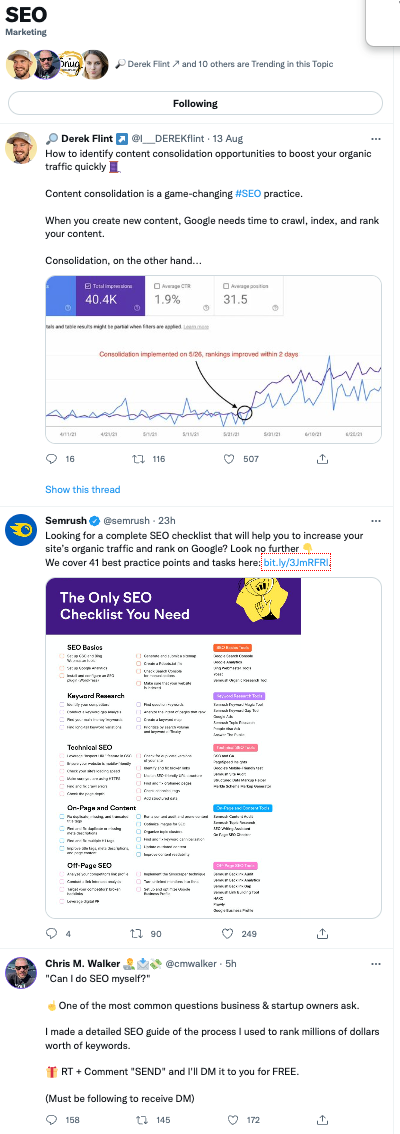
2) List top competitors
After searching out your competitors, you will notice that you’ll have quite a list. As a best practice, try to limit your scope to 5-7 accounts that have a presence on the platform you want to emulate. Here are some ways to learn which top competitors to put on your list.
- Check the number of followers - First, you will want to look at which one of your competitors has the most amount of followers. Bear in mind that some Twitter accounts will have a significant amount of fake or inactive followers. Therefore, you only want to use these as a starting point.
- Check the engagement rate - Now check the engagement rate of each Twitter account. You can do that by checking the replies, likes, and retweets of each Tweet. If someone has fewer followers and more engagement, then that account will be more valuable.
- Check out how active they are in your niche - This is a bit holistic, but if you’re in a very specific niche, the top accounts you want to emulate may regularly engage with people that you’re also following. Make sure to figure out who those accounts could be.
3) Find topics and keywords used by your competitors
One of the best ways to make a Tweet discoverable on a platform is by following relevant topics and keywords used by your competitors. You will want to look at the topics and keywords your competitors are using. Here are three steps that you can use to make the most of this information.
- Follow relevant topics - Regularly check topics you want to trend in and gain followers. For example, if you’re targeting entrepreneurs, follow that topic and figure, analyze the kinds of Tweets and accounts that regularly trend, and apply your learnings to your growth strategy
- Look at topics suggested in your timeline - Twitter uses an algorithm to suggest topics based on your account profile, tweets, and search history. Use these topics as inspiration to create your own tweets.

4) Create Twitter competitive analysis goals
Once you have a good idea of what your competitors are doing, you will want to set up a benchmark for your account. You can do this by looking at your competitor’s numbers and making them your year-end goals. Here are some benchmarks for you to consider:
- The number of followers - Be sure to look at one of your competitor’s follower numbers and set that as your six-month or 12-month goal.
- The number of replies, likes, and retweets - Also, take a look at the number of replies, likes, and retweets that your competitors are getting. This can help you set up a benchmark when it comes to engagement. Reach - Finally, you will want to look at the overall reach of your Tweet. Try to get your Tweets to reach an audience that is near your competitors. This will help drive up your follower numbers and engagement rate.
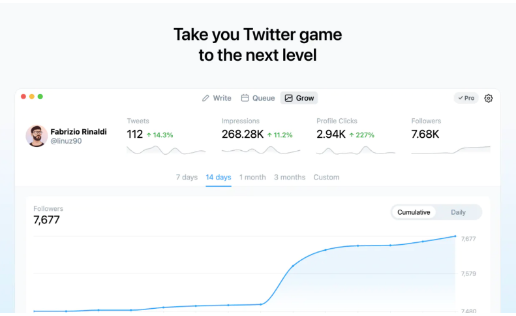
5) Gauge key metrics
The key to a successful Twitter account is knowing which metrics to measure. Here, we will take a look at the top metrics and what they mean.
- Engagements - Engagements include the total number of times a user has interacted with a tweet. That includes the number of times that your Tweet has received replies, likes, and retweets.
- Engagement rate - The engagement rate is the sum of the reactions, comments, and shares divided by the number of posts, divided by the number of followers the profile has all multiplied by 100. For instance, if your total reactions, comments, and shares from 90 Tweets are 50,000 and you have 10,000 followers, then your engagement rate is 5.5.
- Follower growth - This is the number of followers gained during a specific period.
- Mentions - Mentions are the number of times that your account or Tweet has been mentioned by someone else.
- Timing - This metric shows you how a Tweet performs according to a certain time of day. For instance, you may notice that your competitors get a higher engagement rate when they Tweet in the morning versus Tweeting at night.
How to Use Typefully for Twitter Competitive Analysis
Typefully allows you to easily write, schedule, and publish tweets and threads. That includes engagement rates, follower growth, timing, top hashtags, and more. With Typefully, you can find out what your competitors are doing right and match their strategy to help drive your follower growth!
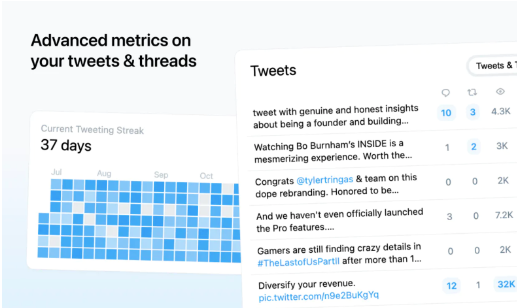
Mastering Twitter Competitive Analysis With Typefully
Learn how to master Twitter competitive analysis and manage your own Twitter account with Typefully. It is an easy way to manage your Tweets, gauge your metrics and grow your accounts.
You can get started for free right now.
Discover
Join 220,000+ creators to grow on 𝕏, LinkedIn, Bluesky and Threads.
Level up your content with AI and boost engagement 🚀
